Viola purpurea, Kellogg
Kim’s (quite extensive) notes and references, proposed keys, unedited. Posting includes 5 drawings and 9 photographs of subspecies V purpurea ssp venosa, ssp mohavensis, and ssp integrifolia, a drawing of ssp purpurea, and photographs of ssp quercetorum.
Proc. Calif. Acad. Sci. 1:55 or 56?, 1855.
Collected by A. Kellogg. Holotype in Californian Academy of Sciences (CAS).
See Abrams L. R. & R.S. Ferris. An Illustrated Flora of the Pacific States: Geraniaceae to Scropulariaceae, Vol. 3. 1951. Stanford University Press.
Sect. Chamaemelanium subsect. Nuttallianae [Marcussen, 2011].
SFO Wildflower CD: V. purpurea, oak violet, mountain violet, associated with oak forests but ascends into pine belts in Mountains. Long-grooved veins, 2 upper petals purple-backed.
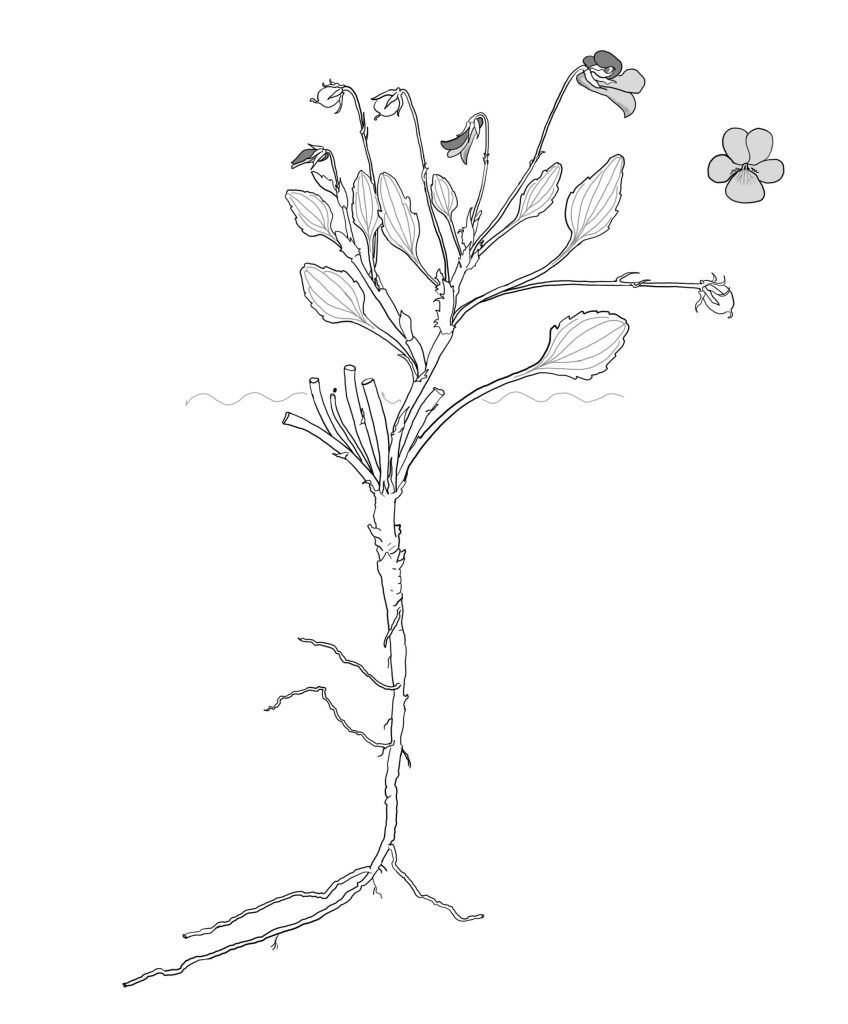
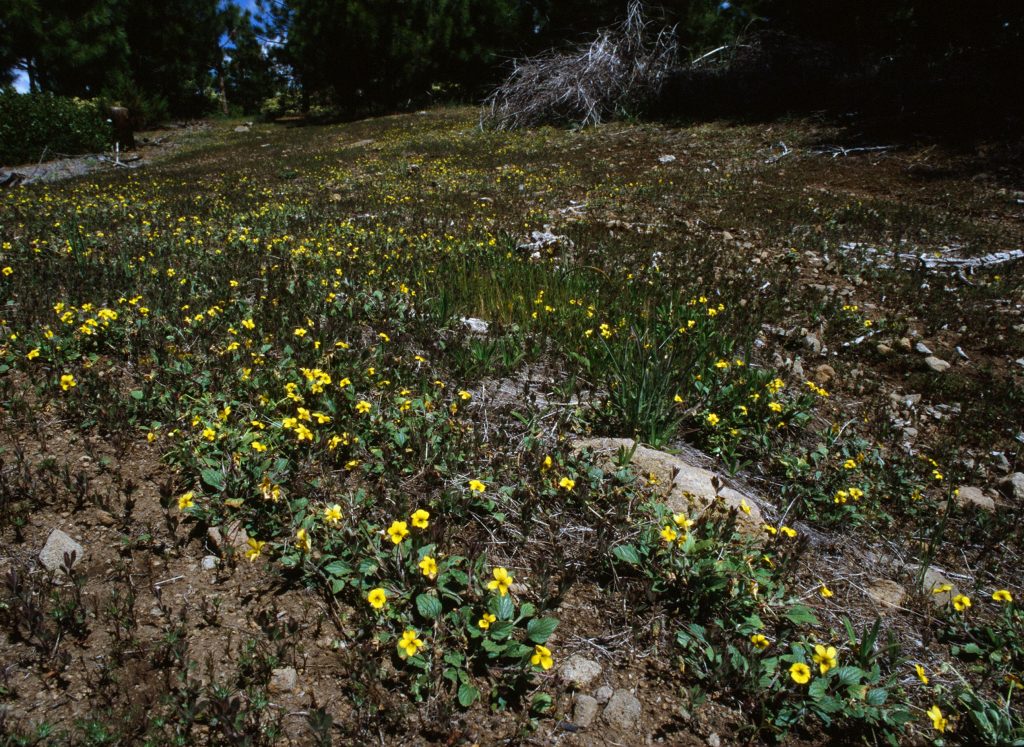
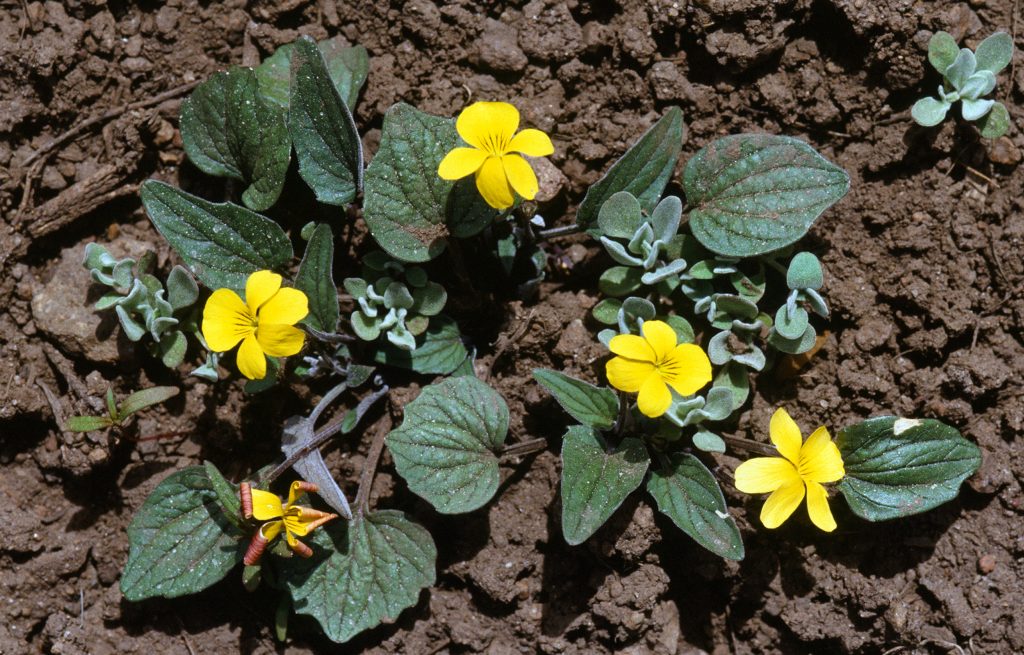
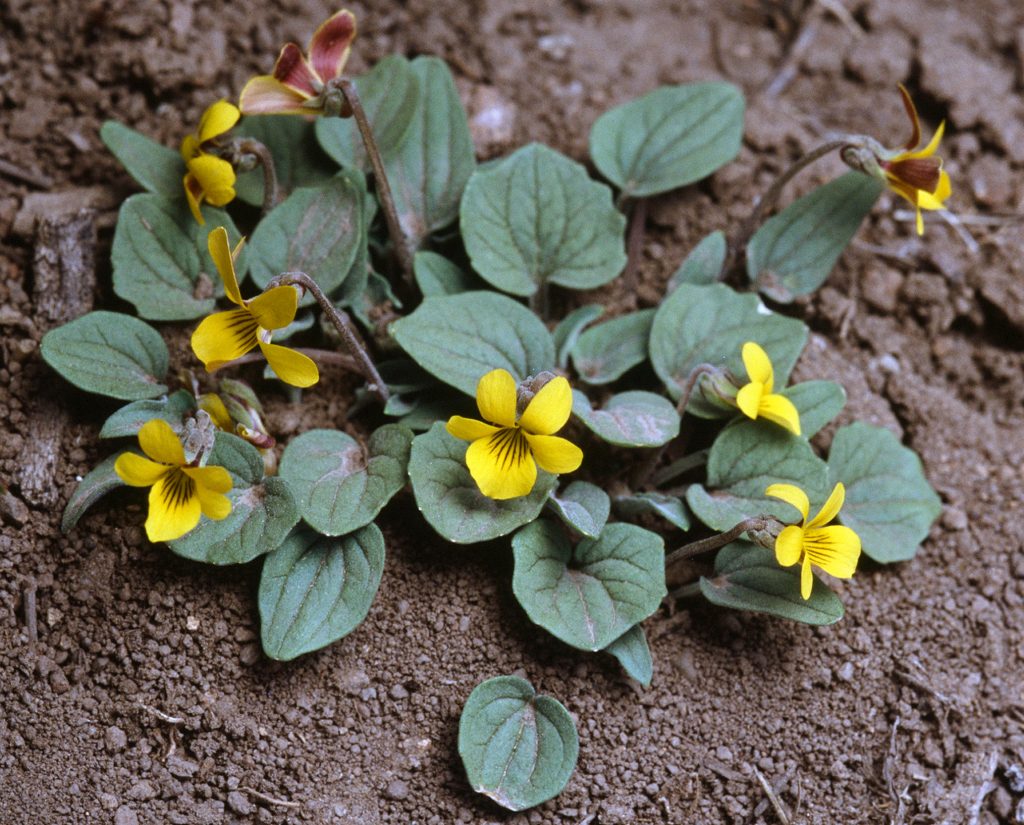
Only var. venosa of V. purpurea in eastern Nevada, not var. mohavensis, and no V. purpurea var. venosa in the west of Nevada.
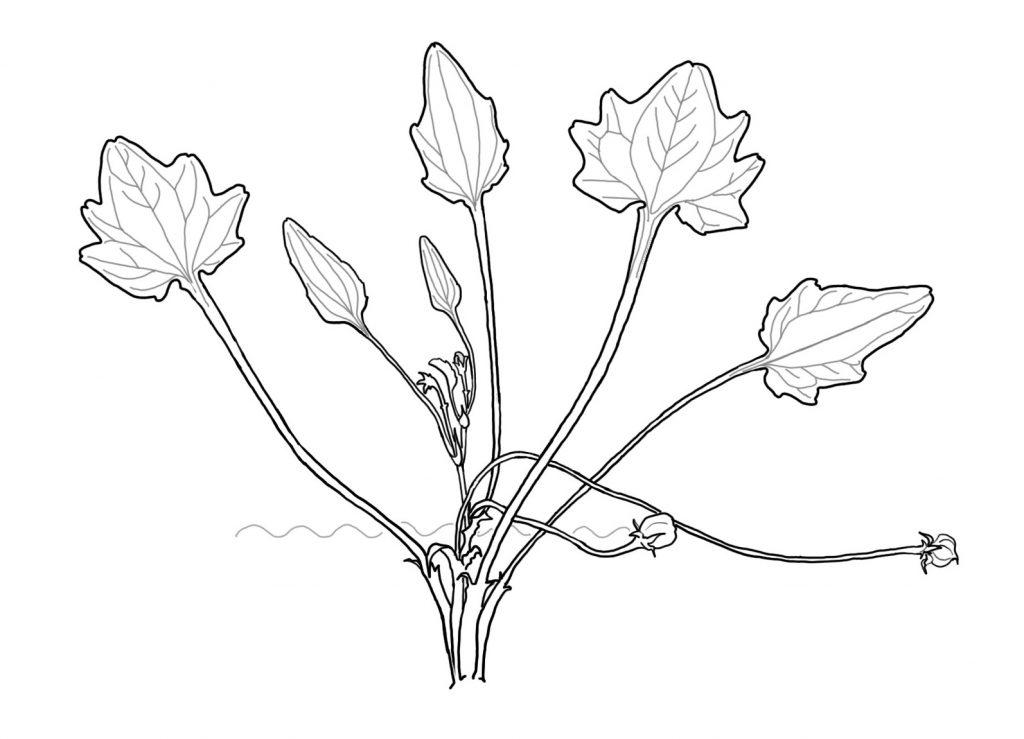
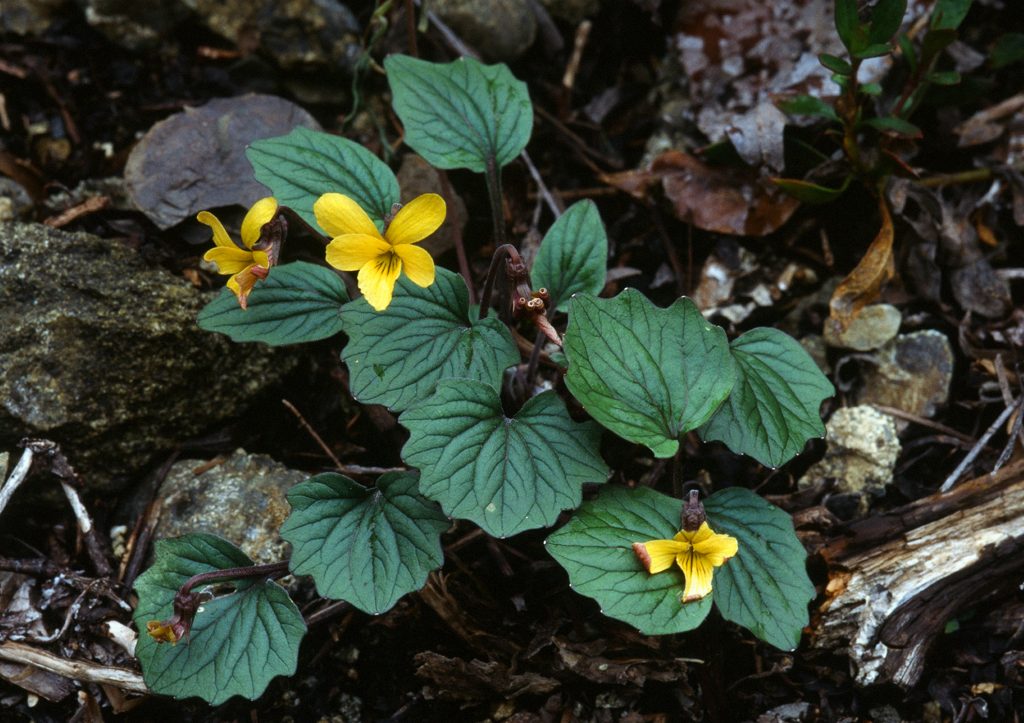
Listed as occurring in Crater Lake National Park, Oregon. [The Mountain violet] a dwarf prostrate plant with conspicuously veined leaves, yellow flowers, found in dry, exposed pumice areas at higher elevations (cf. glabella at all elevations). Its flowers last but a few days, appearing soon after the snow melts.
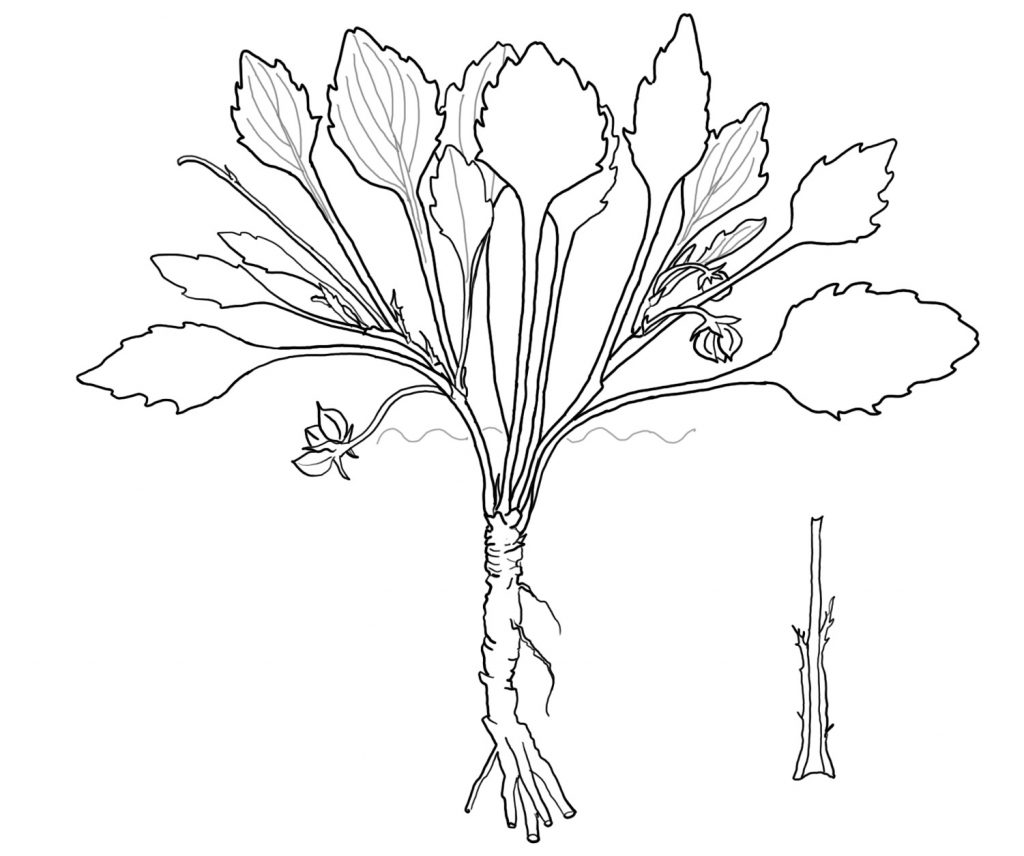
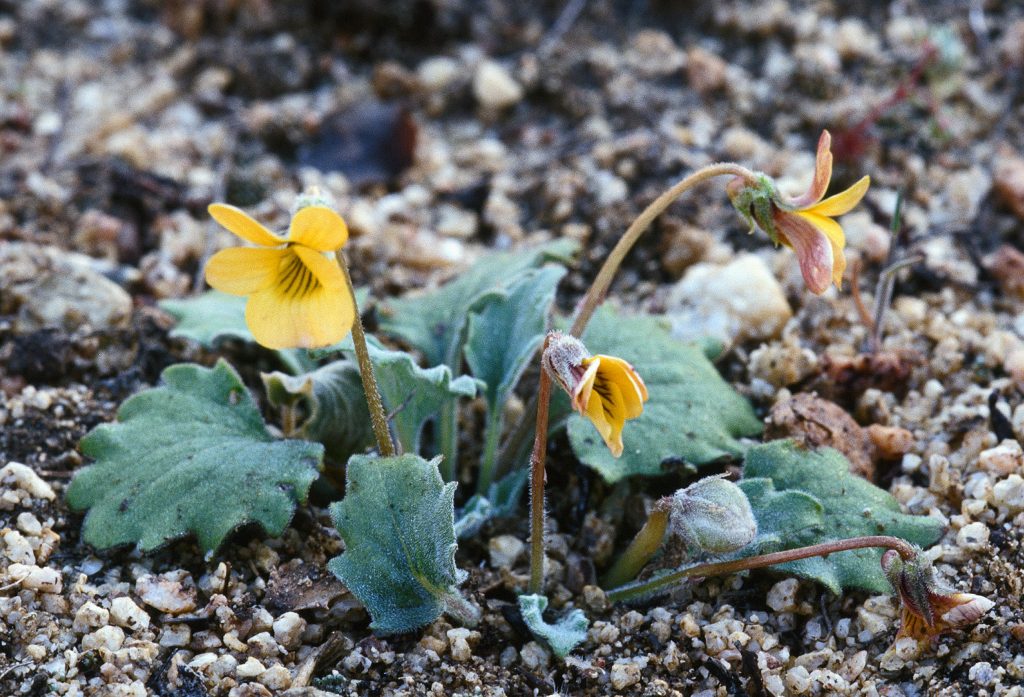
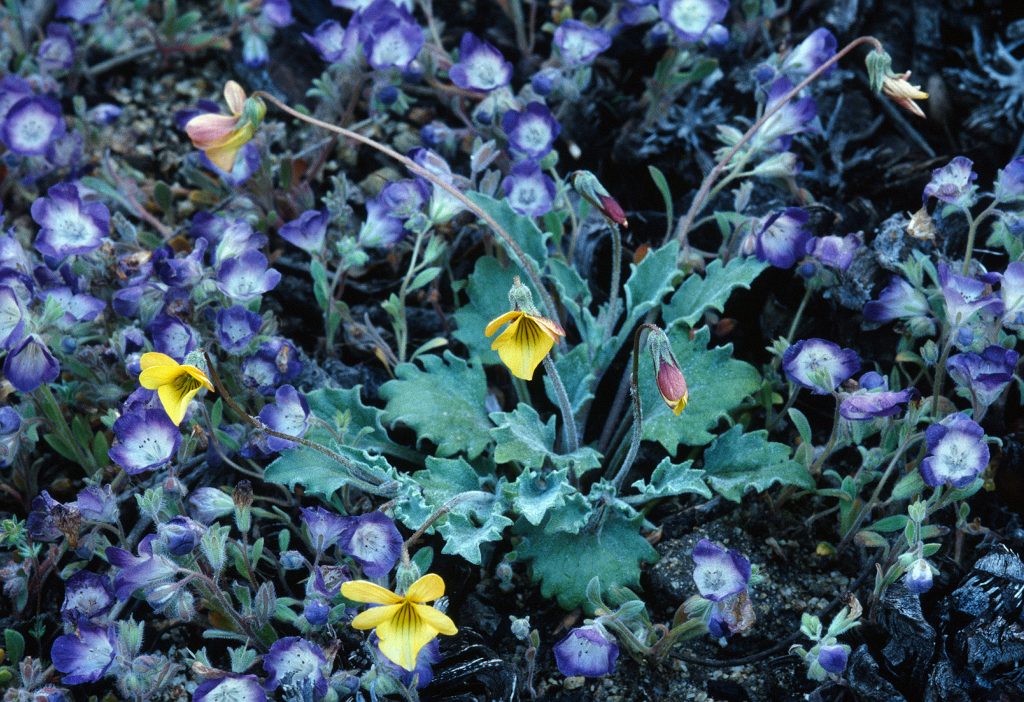
A few sites in BC, Canada. For plant details see e-Flora BC website.

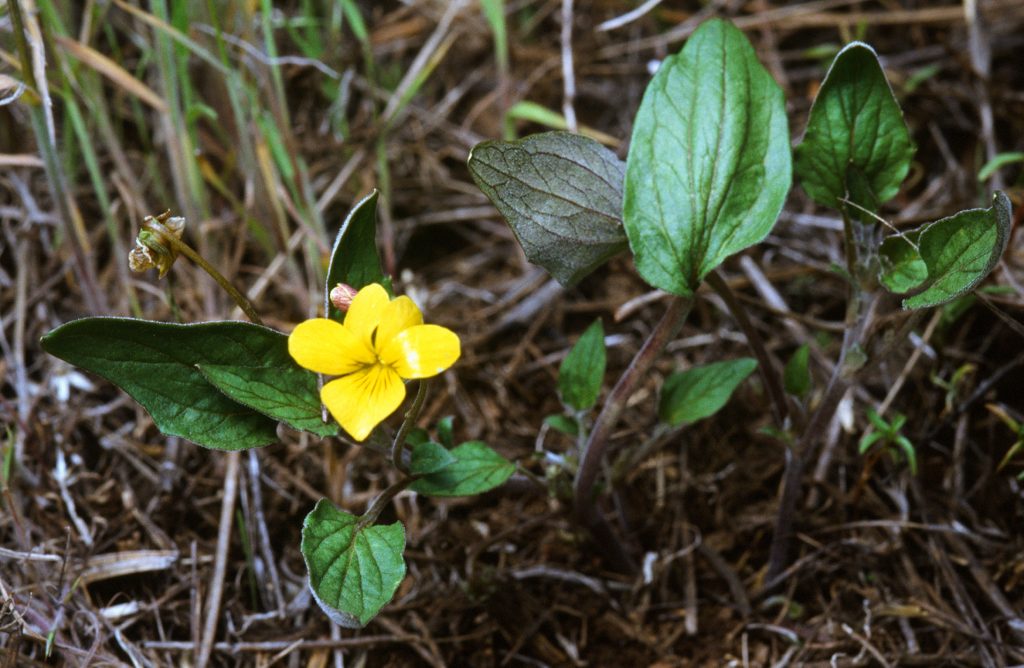
TM, 13 Jan 2010: Davidse’s (see paper in file) points make sense in many respects. In my opinion Clausen’s delimitation of Purpureae and Pedunculatae from Nuttallianae is one of those. Also Ballard et al 1998 concluded with a widely defined Nuttallianae, not least when hybridisation data were considered. My data show that it is even more complex, and that nearly all the Chamaemelanium subsections are non-monophyletic.
Sierra [Nevada] Wildflowers Mt. Lassen to Kern Canyon, Theodore F. Niehaus, 1974, University of California Press:
Leaves narrowly ovate, 2-4 cm long; fls yellow with purple on backs of petals. Dry open slopes 2000-6000 ft, w. slope. Mixed coniferous forest. April-June.
KEY TO THE FAMILY VIOLACEAE (VIOLET)
1a. Flowers with some yellow, dry habitat ………………………………………………………. 2
1b. Flowers without any yellow, moist habitat …………………………………………………. 7
2a. Leaf blade divided, cut or lobed ………………………………………………………………… 3
2b. Leaf blade not cut or lobed ……………………………………………………………………….. 4
3a. Lf divided, 3-9 finger-like lobes……………………………………………………….V. lobata
3b. Lf divided into three large lobes which are further sub-divided………..V. sheltonii
4a. Plants white, wooly ………………………………………………………………….V. tomentosa
4b. Plants not white, wooly ……………………………………………………………………………. 5
5a. Flowers deep yellow, leaves heart-shaped………………………………………V. glabella
5b. Flowers pale yellow, lvs longer than wide ………………………………………………….. 6
6a. Leaves oblong, ovary hairless………………………………………………………… V. bakeri
6b. Leaves ovate, ovary hairy …………………………………………………………. V. purpurea
7a. Flowers white ……………………………………………………………………… V. macloskeyi
7b. Flowers blue-violet …………………………………………………………………….. V. adunca
Nelson, R.A. Handbook of Rocky Mountain Plants. 1969. Dale Stuart King, Tucson, Arizona:
V. purpurea ssp. atriplicifolia: a small plant with its stems partly underground, sometimes only 1-3 inches tall, but may be up to 8 inches, above ground level. The leaves are variable from entire to rather deeply lobed; on their lower surfaces the veins are purplish. Petals yellow, the backs of the upper ones tinged purplish and the lower ones veined with purple. Open slopes in pine forests and sometimes above the timber-line, from Montana south to New Mexico and Arizona.
KEY:
1a. Flowers yellow; petals may be purple-tinged on back.
1b. At least some of the leaves deeply or shallowly lobed or toothed.
1c. Some leaves shallowly lobed or toothed …………………………….. Viola purpurea
2c. All leaves deeply, palmately lobed …………………………………….. Viola sheltonii
2cc. None of the leaves lobed or deeply toothed
3c. Leaves longer than wide …………………………………………………….. Viola nuttallii
3cc. Leaves rounded, heart-shaped at base …………………………………… Viola biflora
1aa. Flowers white, blue or purple
2b. Plants leafy stemmed.
4a. Flowers blue …………………………………………………………………….. Viola adunca
4aa. Flowers white or nearly white
5a. Flowers entirely white; leaves with rounded tips ………………… Viola palustris*
5aa. Flowers with purplish tinge on back of petals …………………. Viola canadensis
2bb. Plants acaulescent
6a. Leaves not dissected ………………………………………………….. Viola nephrophylla
6aa. Leaves deeply, palmately dissected into narrow divisions …. Viola pedatifida
* Reference says V. pallens but this is incorrect.
From Jepson on-line:
V. purpurea Kellogg
Plant 1–35 cm
Stem appearing ± early, sometimes elongating, ascending to erect from woody taproot, generally hairy
Leaves simple, entire to toothed, often purplish (especially below), ± hairy; basal 1–5, petiole 20–145 mm, blade 10–50 mm, ovate to round, tapered to cordate at base, often fleshy; cauline blade < basal, lanceolate to ovate, base tapered to cordate
Inflorescence: peduncle 15–170 mm
Flower: petals deep lemon-yellow, lowest (including spur) 6–17 mm, lower 3 veined purple-brown, lateral 2 bearded, upper 2 purplish outside
Fruit 5–12 mm, puberulent
Chromosomes: n=6,12. TM 2n=2x=12 (Baker, 1949b).
Ecology: Chaparral, dry forest, timberline communities, sagebrush or desert scrub
Elevation: 400–3100 m.
Bioregional distribution: Northwestern California, Cascade Range, Sierra Nevada, Central Western California, Southwestern California, Great Basin Floristic Province, Desert Mountains (Panamint Mtns)
Distribution outside California: to Washington, Wyoming, Colorado, Arizona, n Baja California
Variable; subspp. intergrade; needs study
ssp. mesophyta Baker & Clausen Sierra County, CA, 6200 ft, gravels in full sun.
subsp. integrifolia M.S. Baker & J.C. Clausen
Plant 1–12 cm
Leaves: basal erect to spreading, blade often fleshy, entire, wavy, or shallowly and irregularly dentate, base tapered to subcordate; cauline blade ± lanceolate to ovate, generally entire
Inflorescence: peduncle generally < 70 mm
Chromosomes: n=6
Ecology: Dry, coniferous forests to timberline, in sandy to rocky soil, including serpentine
Elevation: 1200–2700 m.
6350ft. at Colusa/Lake Co. line, CA. Partially shaded talus slope of green schist in a Shasta Fir forest. Deep green, lanceolate, irregularly toothed leaves from a crown buried in the talus slopes. The stem leaves are few with entire margins.
Bioregional distribution: Northwestern California, Cascade Range, n&c High Sierra Nevada
Distribution outside California: sw Oregon
Isotype in Calif. Acad. Sc.
subsp. mohavensis (M.S. Baker & J.C. Clausen) J.C. Clausen
Plant 8–22 cm
Leaves: basal generally erect, blade regularly dentate, base tapered to truncate; cauline blade deeply toothed, base tapered, tip acute
Inflorescence: peduncle < 140 mm
Chromosomes: n=6
Ecology: Desert or sagebrush scrub, dry yellow-pine forest
Elevation: 1000–2400 m.
Bioregional distribution: Transverse Ranges, Peninsular Ranges, East of Sierra Nevada
Kern Co., Ca, 7000 ft. 2-4” tufts of oak-shaped leaves which are dark green above and purple below. The corwn is not buried in the extremely well-drained, dense gritty soil derived from granite rock. The short-pedicelled flowers are deep yellow with typical dark veining.
Distribution outside California: sw Nevada
Flowering time: Apr–Jun
Synonyms: V. aurea Kellogg subsp. m. M.S. Baker & J.C. Clausen
Variable.
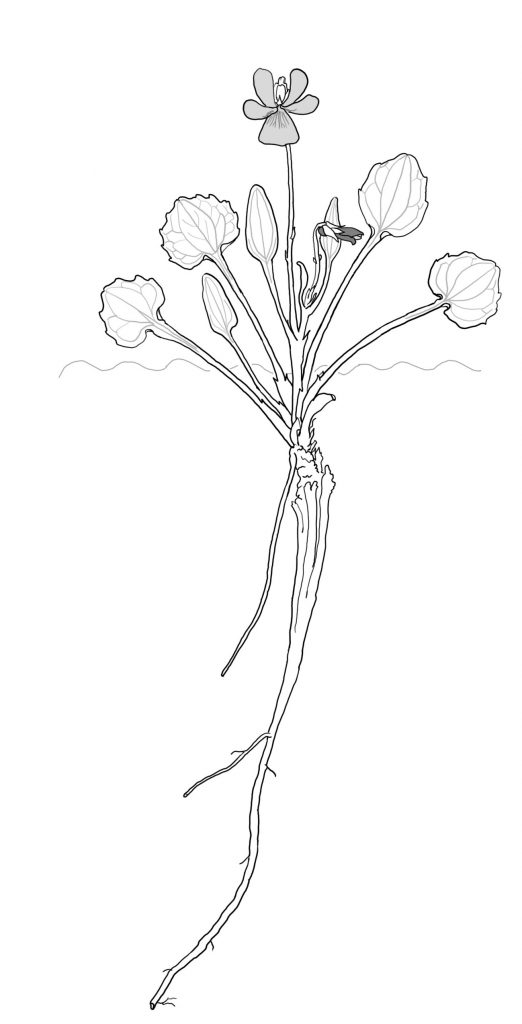
subsp. purpurea
MOUNTAIN VIOLET
Plant 4–22 cm
Leaves generally green, tinged purple, generally glabrous above; basal generally erect, blade base generally truncate to cordate; cauline blade toothed
Inflorescence: peduncle generally < 130 mm
Chromosomes: n=6
Ecology: Open montane forests, scrub
Elevation: 500–2500 m.
Bioregional distribution: Northwestern California, Cascade Range, Sierra Nevada, Central Western California, Southwestern California
Distribution outside California: sw Oregon
Synonyms: subsp. dimorpha M.S. Baker & J.C. Clausen
subsp. quercetorum (M.S. Baker & J.C. Clausen) R.J. Little
Plant 8–35 cm
Leaves generally gray-green (or barely purplish), puberulent; basal erect, blade base generally tapered; cauline blade toothed
Inflorescence: peduncle often > 130 mm
Chromosomes: n=12
Ecology: Dry foothill slopes, in grass or shrubs
Elevation: 400–1800 m.
Bioregional distribution: Northwestern California, Cascade Range, Sierra Nevada, Central Western California, Southwestern California
Distribution outside California: sw Oregon
Synonyms: V. q. M.S. Baker & J.C. Clausen
Similar to subsp. p. when dried.
subsp. venosa (S. Watson) M.S. Baker & J.C. Clausen
Plant 4–11 cm
Leaves: basal erect to spreading, blade often fleshy, base tapered to subcordate; cauline blade generally crenate to deeply toothed, base generally tapered
Inflorescence: peduncle < 70 mm
Chromosomes: n=6
Ecology: Dense shade of forests or scrub
Elevation: 1300–3100 m.
Bioregional distribution: Great Basin Floristic Province, Desert Mountains (Panamint Mtns)
Distribution outside California: to Washington, Wyoming, Colorado
Synonyms: subspp. atriplicifolia (Greene) M.S. Baker & J. Clausen and geophyta M.S. Baker & J. Clausen
Oak Violet, Mountain Violet.
SFO Wildflowers CD: Associated with oak forests but ascends into pine belts in Mtns. Long grooved veins [veins in long grooves on leaves?] two upper petals purple-backed. Pine violet on Mines Road [?V. pinetorum] and in Mt. St. Helena area, SFO environs.
V. purpurea has exaggerated teeth on the leaf margins, teeth are curved, like waves, with terminal glands curled under the tip, i.e. on the concave side of the curled teeth. In my notes from the herbarium type collection, at Utah State University, has V. purpurea ssp. venosa in synonymy under V. purpurea. I don’t agree with this because it is so different in appearance, particularly width, from V. purpurea, and all the other varieties. Keep these as separate varieties, not ssps. see treatment of Holmgren in Intermountain Flora.
V. utahensis vs. V. purpurea ssp. venosa
Gerrit Davidse (pp 75 & 78) says stipules of both species are ‘inconspicuous’. Welsh et al, A Utah Flora, says both species the same and (p. 643) says stipules mostly 4-10 mm long, entire or toothed. Neither mention that the stipules are adnate for most of length. Look up original description! ‘The pine violet (V. purpurea) forms an intergrading series with V. nutallii, a portion of that variation forms the basis for recognition of V. utahensis, but most specimens can be assigned readily to one or other of the species.’ (ie, V. purpurea ssp. venosa). Davidse says, quoting Clausen (p.3) that the V. purpurea species complex was an example of ecologic-genetic speciation, while the V. nutallii Pursch. species complex was characterised as one differentiated by polyploidy. Does this mean that all the purpurea species have the same chromosome number (see p. 2, No). Brainerd does not mention V. utahensis. Description of V. purpurea ssp. venosa with purple pods, brown seeds. For V. nutallii, pods green, seeds pale brown.
ssp. purpurea, Jun 23, 2001, location Lake Mary (Inyo County, California, US)
ssp. venosa Goosefoot violet, sagebrush, Pinyon-juniper and under Cerocarpus, 7,000 – 9,000 ft, flowers May-June. Seeds from Ron Ratko, NNS97-295, mid-brown, 2.8 x 1.7 mm, unusual colourless arils, like small ruffled, frilly flowers.
ssp. integrifolia, Ron Ratko, seeds speckled dark brown to black on yellow background, 3.0 x 1.9mm. Photographed above (in elevation) Tom and Inger Burns, Chiloquin, east of 97N.
Jul 20, 2003, location summit trail above Horse Camp, Mount Shasta, elev appr. 8500 ft (Siskiyou County, California), lower montane to subalpine open rocky slopes and in conifer forests.
May 15, 2003, location Tahoe Basin, Snow Creek watershed, opening in forest, east of North Ave. Kings Beach (Placer County, California, US)
Jun 30, 1964, location Cedars, damp ground on way to Old Pool, 6000′ (Placer County, California, US)
ssp. mohavensis, Ron Ratko, seeds pale grey-brown, speckled with black, 2.5 x 1.6mm.
Viola purpurea Kellogg ssp. mohavensis (M. Baker & J. Clausen) J. Clausen
(Syn. Viola aurea ssp. mohavensis, Viola purpurea mohavensis, Viola aurea ssp. arizonensis) native to California and is found only slightly beyond California borders.
Mojave goosefoot violet. Elevation: between 3280 and 7874 feet [Calflora 2004 (m)]
Viola purpurea ssp. mohavensis
Plant collected up Mt. Pinos road did not have a buried crown.
ssp. mohavensis: Apr 20, 2005, Pinyon-juniper woodland (plant community),
location San Emigdio Mesa (Ventura County, California, US)
CalPhotos website
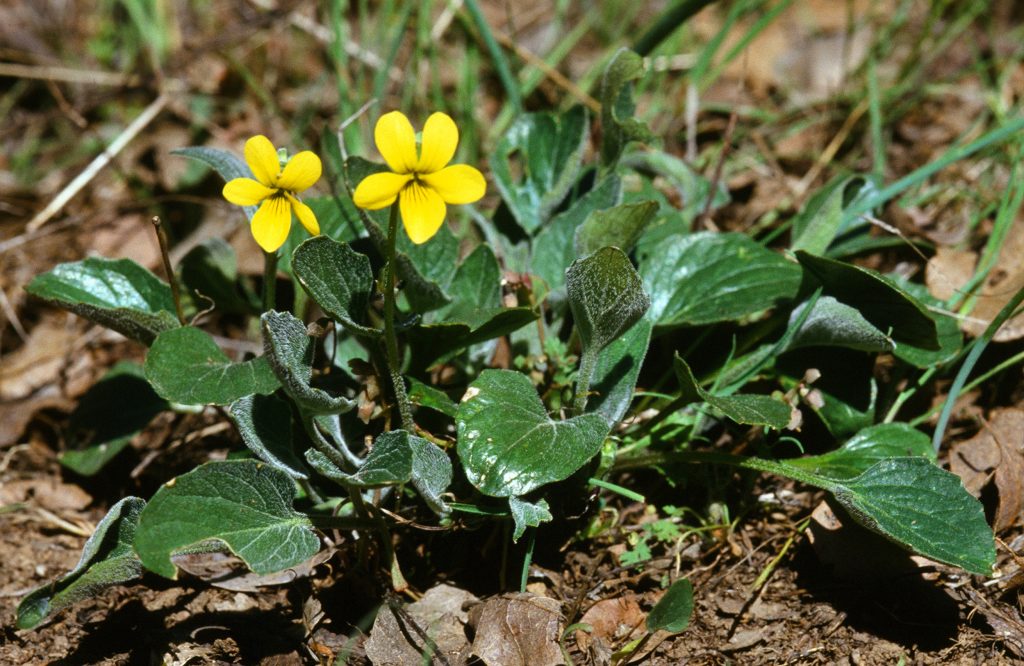
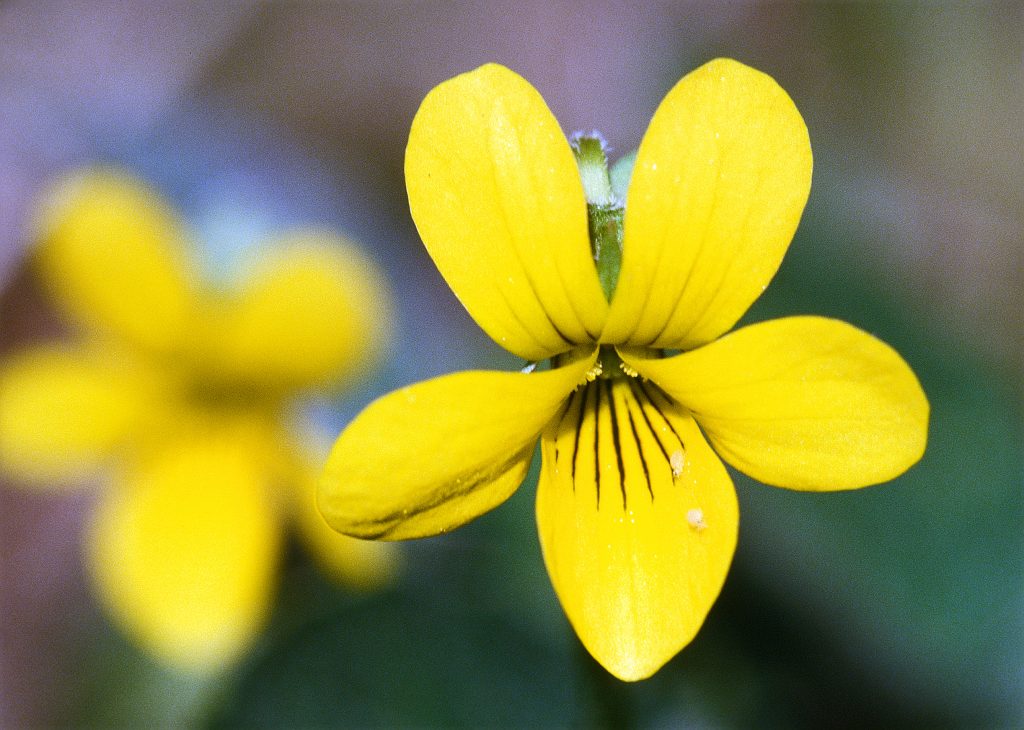
ssp. quercetorum: also filed under Viola quercetorum, but should really be here.
2 miles west of Lick Observatory on Mount Hamilton Road, Mt. Hamilton Range, Santa Clara CO, parking bay next to Oak grove, elevation 8-900 m. Collection dates of 13 April, 28 April in different years. CalFlora Occurrence Database, Berkeley (berkeley.edu). Our collection date 14 April, 1999.
Also, by Mt. Hamilton-Livermore Rd in Arroyo Bayo, E of Mt. Hamilton, Mt. Hamilton Range.
Also I collected it east of Livermore, with the Lawyers, on road that eventually gets to Lick observatory from the west, where the other road we were on, when we got near the observatory was from the south of the observatory. The specimen that I found had shiny leaves and was not as pubescent as the Lick observatory one. From Calphotos by Brother alfred Brousseau this is the true V. quercetorum, the other near the Lick Observatory must be V. aurea ? In file for V. pinetorum is the comment that Harvey says quercetorum is a valid species, also aurea and pinetorum.
The herbarium specimens of Big Bend N.P., Guadalupe Mountains N.P. and Sul Ross University have been combined into one database. No viola species in Big Bend herbarium collection. In Sul Ross, there are collections of Viola purpurea from the area around Hunter Peak (Pine Top), under yellow pines (left turn at the top of Bear Canyon), Guadalupe Mountains National Park, [see below]. There are also collections of V. missouriensis, V. lovelliana and one collection sheet of Viola guadalupensis (type specimen).
Also specimen at Sul Ross of V. purpurea, collected at Pine Top Mountain, 8200 ft, on 16 Sept. 1948. Fred Armstrong said that this location sounds very like the site of Viola guadalupensis, but it has been confirmed since that it is V. purpurea.
There are two more specimens of V. purpurea, one collected above Hunter’s Lodge, Guadalupe Mtns, 27 May 1968, South McKittrick Canyon, 6800 ft. The second was collected in Mid-south McKittrick Canyon, 25 Sept 1971, 6500 ft.
The violet specimen in the Sul Ross herbarium from the Davis Mountains, Mt. Livermore, Madera Canyon, 120 miles south of Guadalupe Mountains was of Viola purpurea.
Scott, R.W., The Alpine Flora of the Rocky Mountains, Vol. 1, The Middle Rockies, 1996:
Scott places in synonomy under Viola purpurea Kellogg:
Viola aurea Kellogg,
Viola pinetorum Greene,
Viola quercetorum M.S. Baker & J.C. Clausen,
Viola utahensis M.S. Baker & J.C. Clausen
Viola venosa (S. Wats.) Rydb.
I don’t think I agree with this. What are all the chromosome numbers?
Puberulent, caulescent, perennial herb from slender, erect, short to elongate rhizomes; stems slender, several to many, ascending to erect. Leaves long-petiolate, with entire to toothed, lanceolate stipules; blades lanceolate to orbicular, crenately toothed to serrulate, the bases cuneate to subcordate, often purple-tinged or purple-veined below, obtuse to acute at the apex; peduncles subequal with the leaves. Petals yellow, veined with purple, often purplish on the dorsal surface, the lateral 2 short-bearded or not; spur very short. Style bearded. Capsules globose, puberulent.
Krummholz and timberline margins in the Salt River and northern Wind River Ranges in Wyoming, Wasatch range in Utah. Montana. Washington south to California, Arizona and Colorado.
Middle Rocky Mountain plants are var. venosa (S. Wats.) Brainerd.
[I saw V. purpurea var. venosa next to V. utahensis in Nevada and they were distinctly different]. One had thicker leaves, but which? Look at slides, and notes, made after second attempt up Currant Mountain. Altitude? c. 9000-9500 ft.
Photographed by DKH, early June, 1997, around the camping area east of Cedar Pass, Warner Mountains, Modoc National Forest, NE California, marked on DeLorme Map of Northern California, page 31, D 5.5. Warner Mountains are a volcanic plateau, an older basalt lava flow.
I also saw V. purpurea var. purpurea with Mike Taylor on June 2, 1998, north of route 50 travelling east from Placerville to Lake Tahoe. Growing along Ice House Road, at 1100m Northern California DeLorme Map, p. 88, B-C 4.
My notes said metamorphic rocks. From Roadside Geology of Northern California: on granite. The bedrock is granite, part of the great Sierra Nevada batholith. Granites generally weather into friendly landscapes that invite wandering among the rounded outcrops and the trees. Close examination of the rock reveals its coarsely-crystalline texture composed of rectangular grains of milky-white or salmon-pink feldspar set among glassy grains of quartz, usually irregular in form. Glass-black crystals, flakes of biotite mica or stubby needles of hornblende pepper most granites.
How far south does V. purpurea var. purpurea go? Guadalupe Mts. Is this var. purpurea?
Viola Purpurea var. purpurea, NE California.
Viola aurea Kellogg, north of Los Angeles,
Viola pinetorum Greene, Mt. Pinos, north of Los Angeles
Viola quercetorum M.S. Baker & J.C. Clausen, SE of San Francisco
Viola utahensis M.S. Baker & J.C. Clausen, Nevada, Utah, Colorado.
Viola venosa (S. Wats.) Rydb. Washington, Utah
Niehaus, T.F., Ripper, C.L., & Savage, V., A Field Guide to Southwestern and Texas Wildflowers (Roger Tory Peterson Field Guides), 1984.:
Nearly triangular leaves with toothed margins, tinted with purple. Petals deep lemon yellow, the lower 3 with purple veins. 5-20 cm. Mountains. Central Arizona, and north. Flowers April to August.
Central Washington Native Plants website, about var. venosa: Icicle River Canyon, shaded wooded area at the base of a large boulder. Perennial; 4 to 11 cm tall Flowers petals deep lemon yellow, lower 3 veined purple-brown on the inside, upper petals purplish on the back; peduncle less than 70 mm. Leaf blade often fleshy, 1 to 5 cm, basal blade generally 1 to 1.5 times longer than wide; coarsely veined and few toothed or lobed, purplish at least along veins especially on the underside of leaves, more or less hairy; cauline leaves crenate to deeply toothed. Lowland dry areas to high montane Chelan County to the eastern Sierra Nevada, east to Montana, Wyoming, and Colorado.
TM, Jul 07: Viola aurea will without doubt group with V. purpurea, of which I already have plenty of material. I do not understand anything about its varieties, by the way, the within-individual variation is so large further subdivision seems to me futile. But then I am a lazy lumper.
TM, 31 May 08: We saw V. purpurea ssp. mohavensis between Donner pass and the lake (Tahoe), but I did not collect it. My intuition tells me V. purpurea is merely a morphologically variable species. Especially the gradual distinction between the base leaves, which can be pretty broad, and the much narrower upper stem leaves is sometimes confusing. Large floworing (=old) and tiny flowering (=young) plants can therefore give a very different impression.
A Field Guide to the Flowers of Lassen Volcanic National Park, M.A. & D.W. Showers, 1981, Loomis Museum Association:
Viola purpurea ssp. dimorpha, 1682-2740 m (5500-9000 ft), Flowering May-July. Perennial from a woody taproot; stems 3-10 cm long, erect or spreading; leaves basal, to 3 cm long; petioles 2-5 cm long; petals 7-9 mm long, yellow, the upper two purplish-brown on the back, the lower three with brownish lines. This plant is quite common in the gravels around Manzanita Lake.
Viola purpurea Coronis Fritillary, Zerene Fritillary, Callippe Fritillary, Atlantis Fritillary, Hydaspe Fritillary